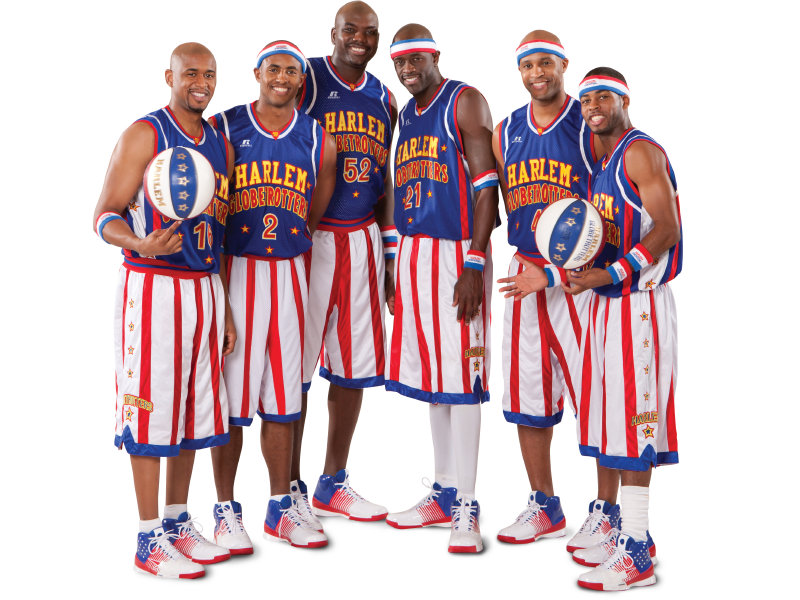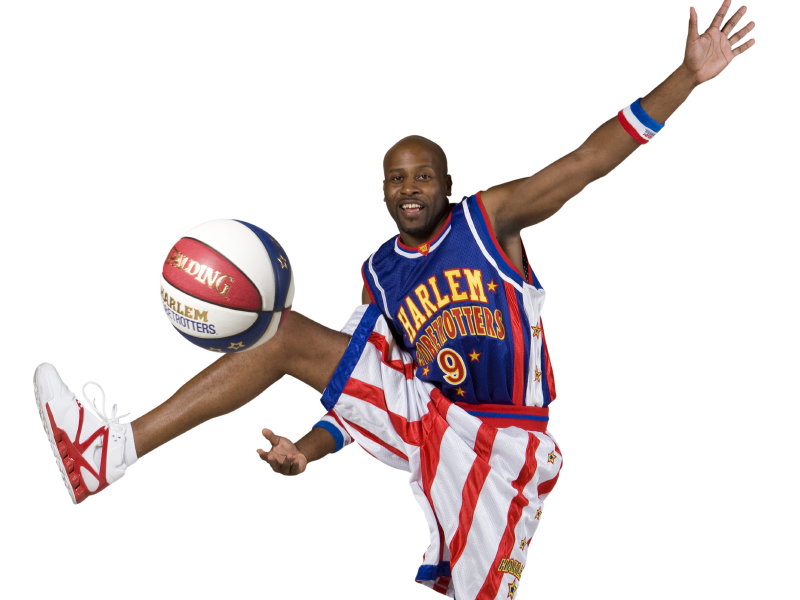They are based in Arizona, founded in Chicago, yet their name is all New York. They are on a perpetual road trip, yet seem right at home wherever they go. They are not known for their competitiveness, but have won over 98 percent of their games since their founding by a London-born Jew in 1926.
The Harlem Globetrotters are also one of the best New Year's Eve traditions in Milwaukee and world renown everywhere. This Dec. 31 they will once again be playing a pair of "games" against their longtime rivals, the Washington Generals, at the Bradley Center. The first game starts at 1 p.m. and the second game tips off at 6 p.m.
The historical nature of the Globetrotters has of course been that only African American players were on the roster. In fact, the last Caucasian player to suit up for the team was Bob Karstens in 1943.
That is, until fresh-faced farm boy Jacob "Hops" Tucker signed on earlier this year. One of Tucker's first performances will be at the Bradley Center next week.
"Yeah, I'm the newbie," Tucker said during a visit to the OnMilwaukee.com offices last week. "But we also have the tallest professional basketball player in the world, 'Tiny' and the first female player in the last 20 years as well."
"Tiny" is actually Paul Sturgess, a native of Loughborough, England, who excelled at both soccer and golf before using his 7-8 height to join Tucker as the only other Caucasian on the team. In fact, there have now been only three whites to ever play for the Globetrotters, despite having had players born in 20 different countries throughout their history.
Sturgess is said to have grown a full foot between the ages of 16 and 17. Other players listed on the current Globetrotters roster include names such as Airport, Bones, Cheese, Dizzy, Firefly, Hacksaw, Jet, Slick, Special K, and for fans of the television show The Amazing Race, two-time contestants Flight Time and Big Easy.
The roots of the Harlem Globetrotters are certainly humble. At first they were known as the "Savoy Big Five" and played basketball exhibitions before dances at Chicago's Savoy Ballroom. In 1927, the team was dubbed the Chicago Globe Trotters and played their first game in tiny Hinckley, Ill., in front of just 300 spectators. Two years later, owner Abe Saperstein decided that an accurate home city of his franchise was irrelevant since they were a barnstorming act.
Wanting to give his team a more urban mystique and considering that the northern Manhattan neighborhood of Harlem was the center of African-American culture at the time, the "Harlem Globetrotters" were born. For what its worth, the Globetrotters played their first game in Harlem in 1968, more than 40 years after their founding.
The Globetrotters early existence was a mixture of competition and exhibition, as the game Dr. James Naismith had invented back in 1891 was still gaining popularity. Ironically, it was segregation in the NBA that fueled the Globetrotters as a legitimate professional basketball team. Since African-Americans had no other team to play for professionally, the Globetrotters got the best players an entire race had to offer.
When the all-black Globetrotters beat the all-white Minneapolis Lakers in back to back years in the late 1940s, support for the NBA to integrate grew. By the time Chuck Cooper was drafted by the Boston Celtics in 1950, the league's color line was broken; so was the Globetrotters monopoly on the best black players in the game.
It was about that time that the Globetrotters, needing a way to still attract audiences for their games, began incorporating more showmanship than basketball into their performances. Certainly, basketball was still the backdrop, but the score became little more than a way of facilitating the beginning and end of the exhibition.
Over the years, such household names as Meadowlark Lemon, Geese Ausbie, and Curly Neal ushered in an era of the Globetrotters being more than a basketball team that did ball tricks; they became ambassadors of the game. And even though all of them have long been retired, the legacy of family entertainment that began so many years ago continues today with a new group of young players.
"I think people will tend to think of me as the ball boy," Hops Tucker says with a smile. "Obviously I'm not 6-6, I don't look like the typical guy that you would picture, but when the fans leave the arena, I'm hoping they know I'm not the ball boy anymore."
Tucker first gained the attention of the Globetrotters this spring when he won the college slam dunk championship as a 5-10 farm boy from downstate Illinois with a 50 inch vertical leap.
"They saw me during the dunk contest and they drafted me," Tucker says. "They contacted me through my school (Illinois College) in May right before I graduated."
After getting "drafted" Tucker and the rest of the Globetrotters embarked on a two week training camp in Long Island that mostly consisted of conditioning drills. From there, each player's specific skill set is crafted and honed until they are ready to learn the routines that make the Globetrotters what they are.
"When you hear the name Harlem Globetrotters, whether you are in the U.S. or somewhere overseas, they know exactly who you are talking about," Tucker says. "Not only on the floor, but off the basketball floor as well, visiting schools and hospitals, and trying to give the younger generation a positive message. That was huge for me because I really want to be a part of that."
Doug Russell has been covering Milwaukee and Wisconsin sports for over 20 years on radio, television, magazines, and now at OnMilwaukee.com.
Over the course of his career, the Edward R. Murrow Award winner and Emmy nominee has covered the Packers in Super Bowls XXXI, XXXII and XLV, traveled to Pasadena with the Badgers for Rose Bowls, been to the Final Four with Marquette, and saw first-hand the entire Brewers playoff runs in 2008 and 2011. Doug has also covered The Masters, several PGA Championships, MLB All-Star Games, and Kentucky Derbys; the Davis Cup, the U.S. Open, and the Sugar Bowl, along with NCAA football and basketball conference championships, and for that matter just about anything else that involves a field (or court, or rink) of play.
Doug was a sports reporter and host at WTMJ-AM radio from 1996-2000, before taking his radio skills to national syndication at Sporting News Radio from 2000-2007. From 2007-2011, he hosted his own morning radio sports show back here in Milwaukee, before returning to the national scene at Yahoo! Sports Radio last July. Doug's written work has also been featured in The Sporting News, Milwaukee Magazine, Inside Wisconsin Sports, and Brewers GameDay.
Doug and his wife, Erika, split their time between their residences in Pewaukee and Houston, TX.





